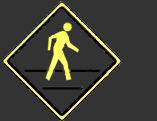-PROVFLUX ARTIST-
Mobile Urban Research Laboratory
by Elijah Driscoll + JohnJ McGurk
Mission
In the development of cities, there is an ebb and flow of energy within various
districts. We are to question what it is that contributes to that cycle, and
more importantly, what is necessary to maintain the vitality of neighborhoods
within the city. What does it take to keep an urban environment full of life,
in which citizens are active participants in the life of their community?
The goal of this proposal is to address how a public forum might influence
the vitality of urban spaces.
The Mobile Urban Research Lab is a proposal to help communities anticipate the constant transformation of the urban condition. M.U.R.L. will travel from city to city, establishing itself in contested sites and forming alliances with local organizations, city governments, and the community. A schedule of workshops, performances, and debates is determined with respect to local conditions.
M.U.R.L. is not intended to design the city but to further the investigation and education about how design could be a more democratic and participatory process. Rather than a display of predetermined information, the interventions will be shaped by the public in conjunction with invited participants.
M.U.R.L.’s components
When M.U.R.L. is invited into a city, a site is quickly established for a
preliminary intervention that will draw attention to the program and cull
interest from necessary local partners. M.U.R.L. arrives on site as a series
of shipping containers carrying scaffolding, canopies, construction materials,
computers, and facililties for video recording and display. Using prefabricated
materials, the projects mold themselves to the existing fabric of the city,
utilizing local knowledge and history to define contested areas to work with.
The containers offer a modular method of transporting the organization and subsequently creating quick structures when the components are unloaded and configured to create public space. Scaffolding allows M.U.R.L. to adapt and form itself to existing urban conditions and to achieve great heights, creating viewing towers as well as large-scale video projections as part of the program of events. Extensive computing and video facilities are contained within so that information gathered in one city is available in the next through a site library and archive. This also enables M.U.R.L. to utilize the internet for live webcasting of events and to publish its findings.
The last months of the intervention will be devoted to the archiving and evaluation of the information gathered. M.U.R.L. will take down the intervention, the final results are submitted to interested parties, and links may be continued depending on the residual infrastructure that is left behind.
Site Conditions – Providence, Rhode Island
The Woonasquatucket River courses through the middle of downtown Providence.
It is a currently a major part of public life in Providence as a site for
festivals in the summer as well as a defining boundary between the “downcity”
area and the east side of town. Historically, it was a significant enough
geographical feature to determine the development of mills and worker housing
as well as the placement of rail lines. The streets (Promenade St. and Harris
Ave.) that run along the Woonasquatucket River were formerly a major linkage
between those industrial neighborhoods and downtown.
Today, the Promenade District has fallen into neglect and is the site of abandoned or nondescript buildings, steel stockyards, empty lots, chain link fence, and overgrown brush. Industry has moved on and the surrounding housing no longer relates to those remaining complexes. It has become a disjointed and awkward space within the city.
However, the current state of the Promenade District offers many opportunities to rise from the ashes. It lies at the intersection of several key regions in the city. While it has a very industrial character, it is also the largest element of nature within the city, literally flowing through or influencing each of these regions. The industrial history also means that there are large lots, some of which may be cross-zoned for new use types. These factors make it a very appealing region for developers and could contribute to the revitalization of the Promenade District as a new heart of the city.
Through investigation of the Woonasquatucket River Corridor, M.U.R.L. identified the recently redeveloped Eagle Square site as a location for a successful intervention. At time of the development, major debates took place over the developer’s intention to level a complex of historic mill buildings. As a result, the proposal was changed to incorporate mixed-use programs and some historic buildings were saved. Other sites in the area, such as the Rising Sun Mills building, are the subject of further debates. M.U.R.L. will become an important element in these debates, bringing together city government, developers, local community organizations, invited artists, and the general public. The bridging of gaps in communication will create a shared vision of the city.
Specific to American urban and suburban design is the proliferation of “big box” development. Horizontally spread across every corner of the U.S., this type of development is increasingly encroaching upon urban space. As a result, issues of density, mixed use, and efficiency are consistently ignored. M.U.R.L. believes dialogue and debate about this form of development must be increased in order for solutions and alternative methods to be initiated. These rooftops are opportunities for public occupation at a major scale (sports facilities, urban green space, etc...) M.U.R.L. will engage this issue while acknowledging the local history. What opportunities for new forms of public space are present if laws are changed to initiate the occupation of these uncharted territories?
(continued here)
